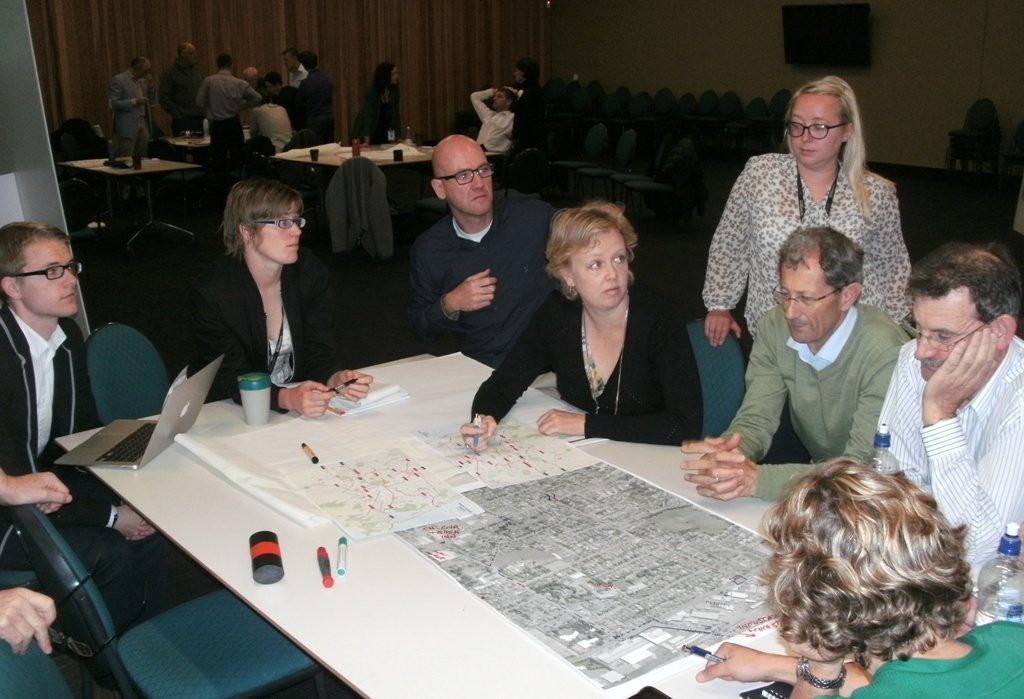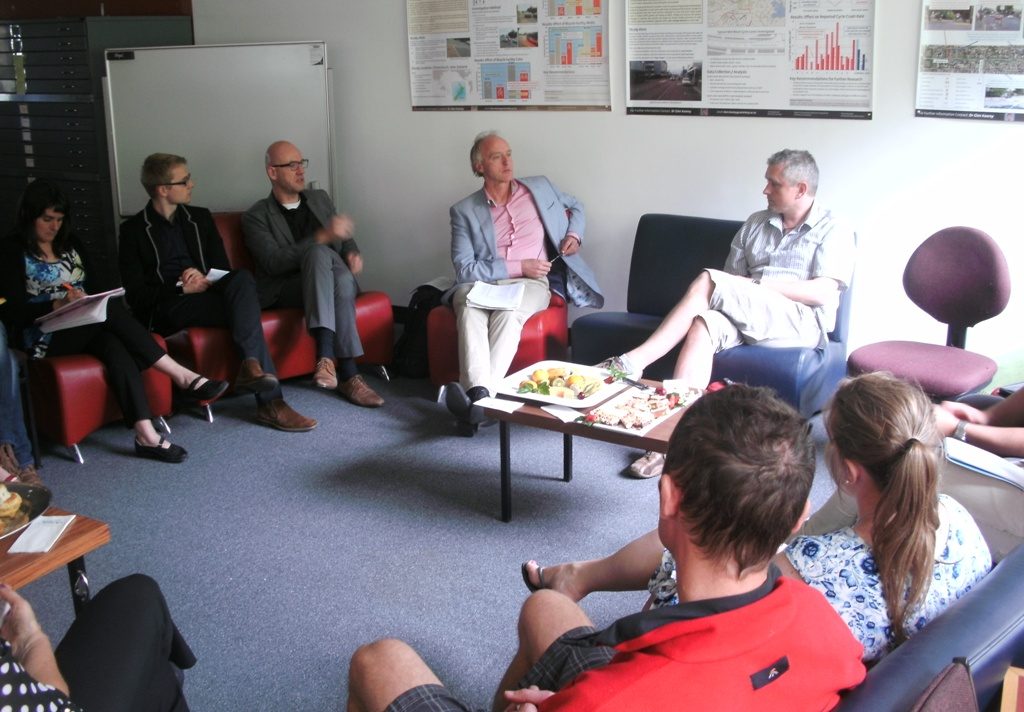There’s a stereotype about the hard-working Dutch, and Christchurch put that to the test over the past few days. As mentioned last week, the city was host to two visiting experts in cycle planning from The Netherlands, and they had a busy time of it.

Monday saw Leo de Jong and Mark Brussel on their bikes shaking off the jetlag and having a look at various locations around town. Evidently the rather direct exposure to traffic at one or two busy intersections was a bit intimidating for our Dutch visitors! On Tuesday they spent some time in Wellington and, perhaps not surprisingly, found even more to worry about on the state of cycling there.
Wednesday saw them back in Christchurch talking to Council staff and looking around; unfortunately the weather limited much of the site travel to a van rather than a bike. Then on Thursday, they workshopped some cycle planning and design issues with key design staff, and also discussed marketing and promotion aspects for cycling. The evening saw a very lively discussion to a public audience of about 70 people at CPIT. As well as putting across their thoughts on how things have been developed in The Netherlands, they also played a useful contextual video from the Dutch Cycling Embassy explaining how they got there.

On Friday, some key impressions were passed on to senior project staff and City Councillors. And there was also the opportunity to visit researchers at Canterbury University to discuss cycling research initiatives there. Somewhere in amongst all this, the dynamic duo also found time to talk to various media, including Newstalk ZB and TVNZ.
So what did Mark and Leo find? Well evidently they were actually quite impressed with the process underway to make Christchurch’s cycleways a reality. Clearly there was a high ambition on the part of everyone, and a good multi-discipline team was involved. They also felt that there was a lot to like already about the cycling provision in Christchurch, certainly compared to many other places they had visited around the world. One comment was that it actually had a more cycle-friendly feel than the much-vaunted Paris (supposedly in the top 20 cycling cities of the world according to Copenhagenize).

But (and there’s always a but), there’s plenty that can be done. In their mind, the concept of conventional NZ painted bike lanes will never be sufficient to provide a suitably safe environment; certainly one that will attract the “would-be” bikers. So the trick is to either provide separated bike facilities alongside the busier arterial routes, or to provide suitably low volume & low speed local streets where all road users can safely mingle. That is the basic Dutch recipe, using the famous five principles of Safety, Coherence, Directness, Attractiveness and Comfort. Their ultimate test is whether a 10-year-old can safely negotiate the network on their own – indeed, they suggested that the true test for Christchurch would be to get some 10-year-olds in about five years time to report on their perceptions and experiences riding around…
It’s also more than just cycle infrastructure. The duo were adamant that the new cycleways had to go hand in hand with communication and promotion initiatives, as well as good land use and transport planning. The latter is often overlooked – a new cycleway network is no good for example if people are living many miles away from their preferred destinations for work, shopping, school, etc. Or if good bike parking is not required of all businesses. Or if motor vehicles are still prioritised everywhere…
We thank Mark and Leo for their valuable time and insights over the past week; hopefully the City Council can build on this guidance as the cycleway programme gets developed. It looks like the pair might be back in town some time later; let’s hope that we can show them that we have taken their lessons to heart.
{The support of the Dutch Embassy in bringing Mark & Leo to New Zealand is greatly appreciated!}

50 years ago 10 year olds and younger always cycled to school etc. Today, much of that cycling skill has been lost, and cyclists seem totaly unaware that they too have a huge influence over their own safety on the roads. While cycles may have ceratin legal rights on our roads,rights alone dont make them safe. Knowledge of road rules, keeping well left or out of the way of traffic and adhering to the road rules would go a long way in any education package that needs to be aimed at Cyclists. The only road traffic signs are aimed at motorists to beware of cyclists, where are the traffic signs saying beware of traffic? How about grading ceratin routes for their safety such as hagley park being a 10 star rating for cyclists and Ricarton Rd as an example about a 3 star rating? Safety on our roads is a two waty street
Actually the “trick” is to provide separated facilities on arterial roads *and* (very) low-volume / low-speed local streets. They should have told you that. David Hembrow (you may have heard of him, he actually used to live in NZ for a while) explains this on his blog: http://www.aviewfromthecyclepath.com/2012/04/100-segregation-of-bikes-and-cars.html
Earlier this year I rode most of the route shown in the video, on one of David’s Study Tours, which I can highly recommend doing if you’re lucky enough to have the opportunity.
And Cedric, you’re an idiot and a bitter, twisted old man.